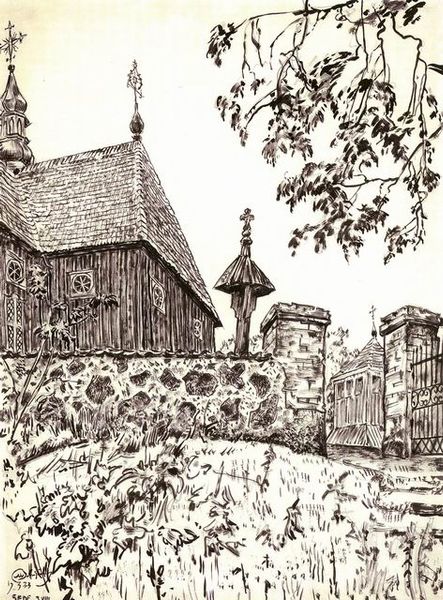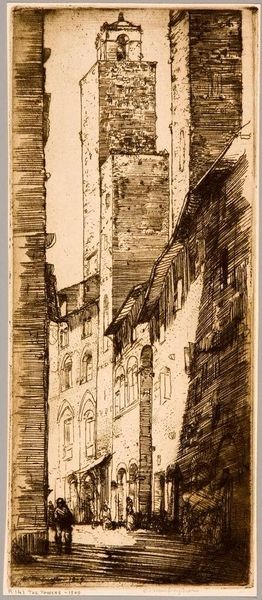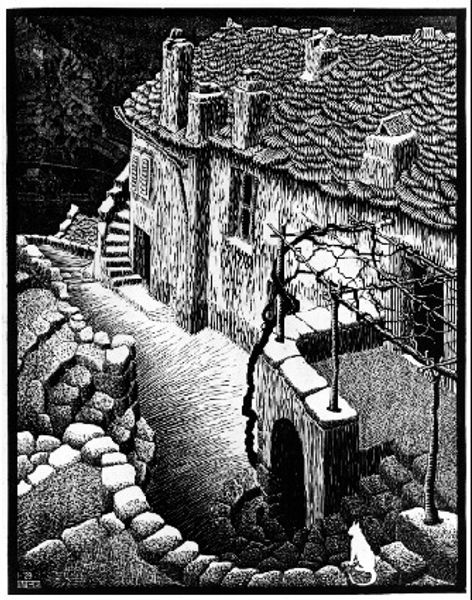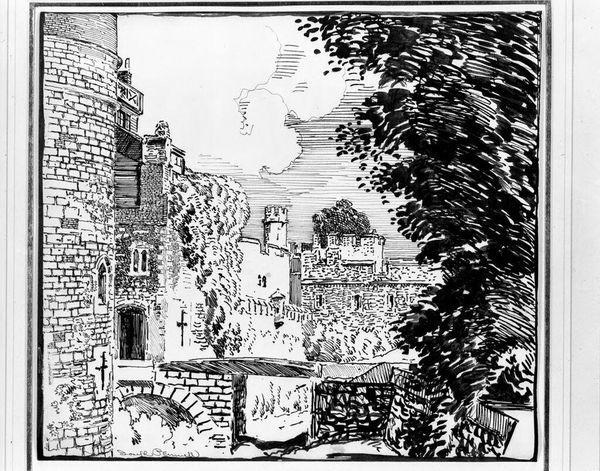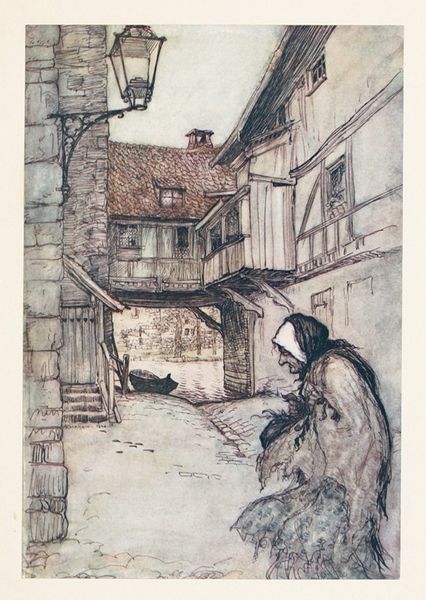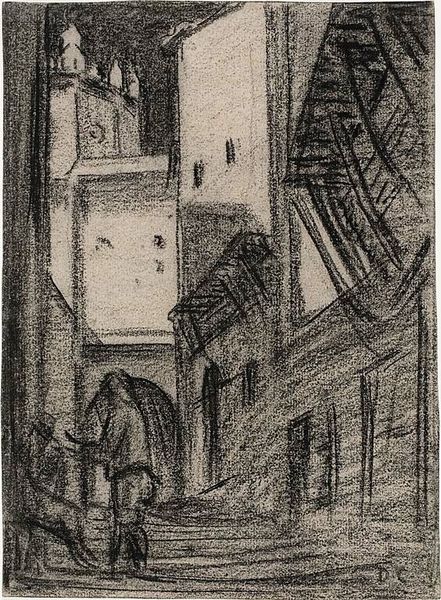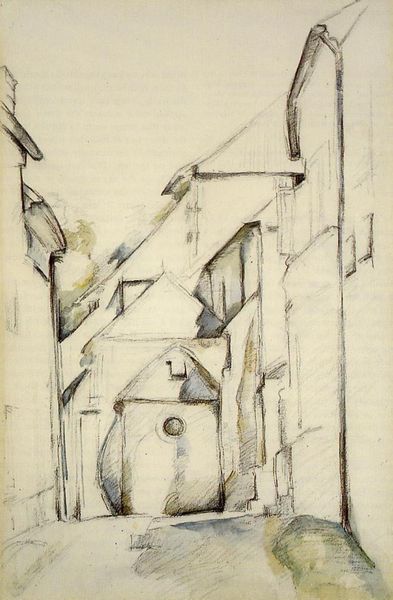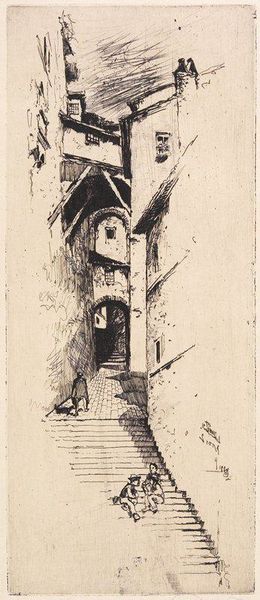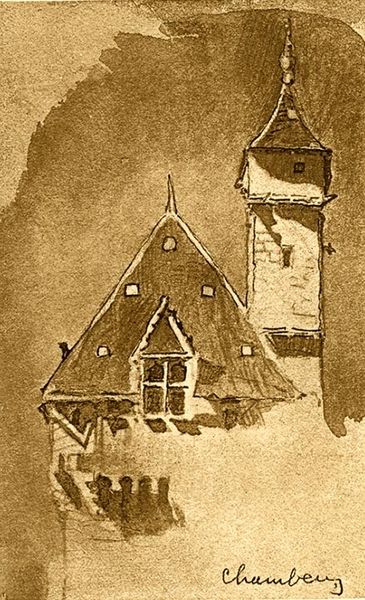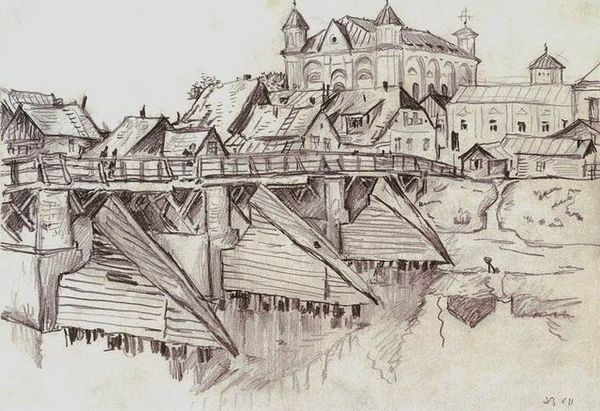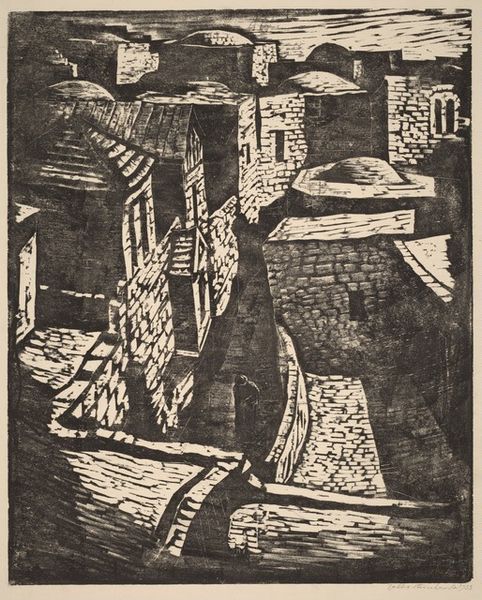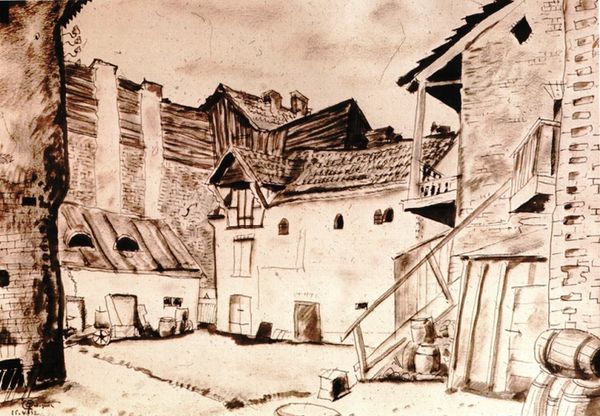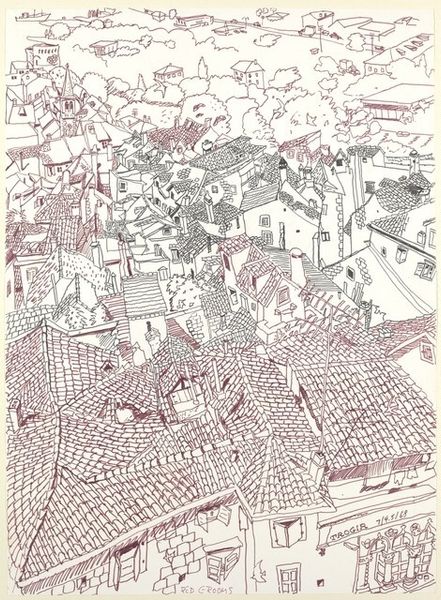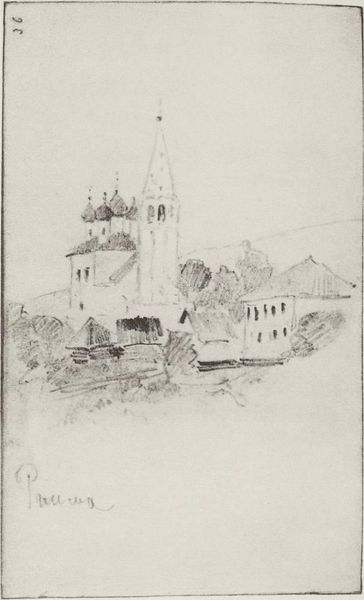
drawing, print, etching, paper, ink
#
drawing
#
art-nouveau
# print
#
etching
#
etching
#
paper
#
ink
#
geometric
#
cityscape
Dimensions: 17.7 x 12.1 cm
Copyright: Public domain US
Editor: We're looking at Mstislav Dobuzhinsky's "Rooftops," created in 1901 using etching, ink, and paper. It's a cityscape rendered with striking geometric forms. I'm really struck by the textures achieved with etching, especially the worn, almost decaying look of the brickwork. What stands out to you about this print? Curator: For me, it's all about the labor and materials embedded within the image itself. Consider the etching process, the repetitive act of scoring the plate, a kind of industrial reproduction in miniature. Dobuzhinsky isn't just depicting rooftops; he's showing us a method, a means of production. It emphasizes a tension between fine art and craft. Does the image's style reinforce the laborious production for you? Editor: I see what you mean. The density of the lines, especially in the roofs, makes it feel really handmade despite being a print. It suggests a real, physical process. So, are you saying the very act of etching challenges ideas about artistic skill and value? Curator: Precisely. We're forced to confront the repetitive, almost mechanical actions needed to create it, much like the labor that built these rooftops, brick by painstaking brick. Also consider what's *not* depicted – the people who lived and worked beneath these roofs, the implied labor. The architecture becomes a stand-in for human activity. Editor: That's fascinating. I hadn't considered the absence of people as a comment on labor. Now, I see the image less as a simple cityscape and more as an embodiment of the processes that create the city itself. Curator: And consider the role of paper as a relatively accessible material. The use of a print technique meant the image could be reproduced, potentially circulating ideas more widely than a unique painting. How do you think that potential accessibility ties into its subject matter, ordinary rooftops? Editor: I guess making art from something ordinary…that is mass-produced and can be distributed challenges the ideas of exclusivity. Thank you for that view. It completely shifted my perception of it. Curator: Mine as well! Seeing your observation helps me think about urban context within art and mass production a bit differently now.
Comments
No comments
Be the first to comment and join the conversation on the ultimate creative platform.
